Parts Anodized In Be-Cu.com
Anodizing is a surface treatment process that enhances the corrosion resistance, durability, and appearance of various metals, primarily aluminum. However, processes also exist for titanium, zinc, magnesium, niobium, zirconium, hafnium, and tantalum.Anode oxidation involves the formation of a controlled oxide layer on the metal’s surface through an electrochemical process. Anodizing offers numerous benefits and is widely used in industries such as aerospace, automotive, construction, and electronics.Anodic films can also be used for cosmetic effects, either with thick porous coatings that can absorb dyes in any number of colors or with thin transparent coatings that add interference effects to reflected light.Anodizing Types Available from Be-Cu.com: Type II Anodize, Type III Hard coat, Type III w/ PTFE
Our anodizing service allow us to offer our customers high quality spare parts with surface finish used for coloring parts, improve durability and enhance corrosion resistance after precision manufacturing process.We can offer all kinds of anodizing either finished in-house or from our partner. More and more customers benefit from our wide range of anodizing service. Together with our machining and heat treatment capabilities, our surface treatment capabilities enable us become your “One Stop Shop” project supplier.
Anodizing Service In China – Aluminum Anodizing Company
To supply Anodizing Service in a more efficient way, We also have in-house fixtures capabilities. We have a jig and fixtures shop with our quality die maker using vertical machining centers and other equipments to create the jig and fixture necessary for your anodizing project. Our in-house tool shop allows us to control the cost as well as our delivery. So we are not only precision manufacturing company, but also the anodizing manufacturer,provide a one-stop solution with our surface treatment suppliers. Besides, it is available to supply our overseas customers with tooling only in a low cost if they would like to make Anodizing jig and fixtures themselves.Our Anodizing Service list as follow:
- Anodizing Service For CNC Machining Parts
- Anodizing Service For CNC Milling Parts
- Anodizing Service For CNC Turning Parts
- Anodizing Service For Large CNC Machining Parts
- Anodizing Service For 5 Axis CNC Machining Parts
- Anodizing Service For Investment Casting Parts
- Anodizing Service For Sheet Metal Parts
- Anodizing Service For Forging Parts
- Anodizing Service For Die Casting Parts
- Anodizing Service For Plastic Injection Parts
All the precision project in our company can be designed from blue prints and also an existing sample. With our partnerships with leading anodizers, Be-Cu.com’s anodizing service can match our pre-plating processing with the correct anodizing to provide seamless delivery of your finished products.If you are interested in learning more about our anodizing services, please do not hesitate to contact be-cu.com. We would be more than happy to discuss your project requirements and provide you with a competitive quote.
Aluminum Anodizing Service Partners Available
Aluminum is a versatile metal widely used in various industries due to its lightweight, durability, and excellent corrosion resistance. However, to further enhance its properties and improve its appearance, aluminum anodizing is often employed as a surface treatment. Aluminum anodizing is a process that creates a protective and decorative oxide layer on the aluminum surface, offering increased corrosion resistance, improved hardness, and a wide range of color options.
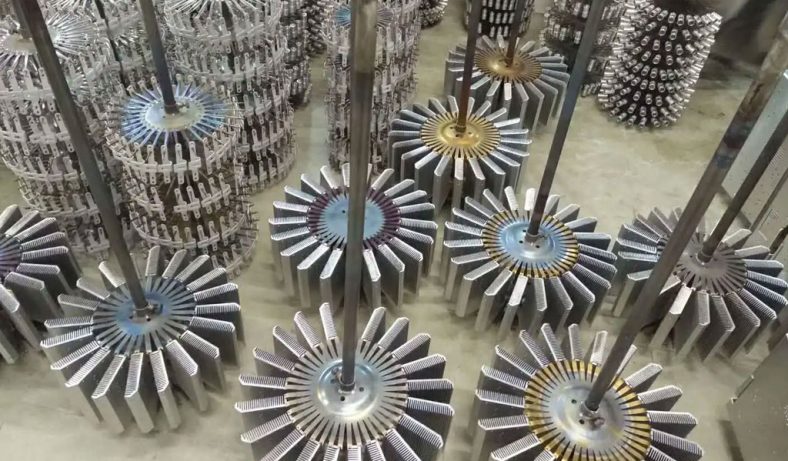
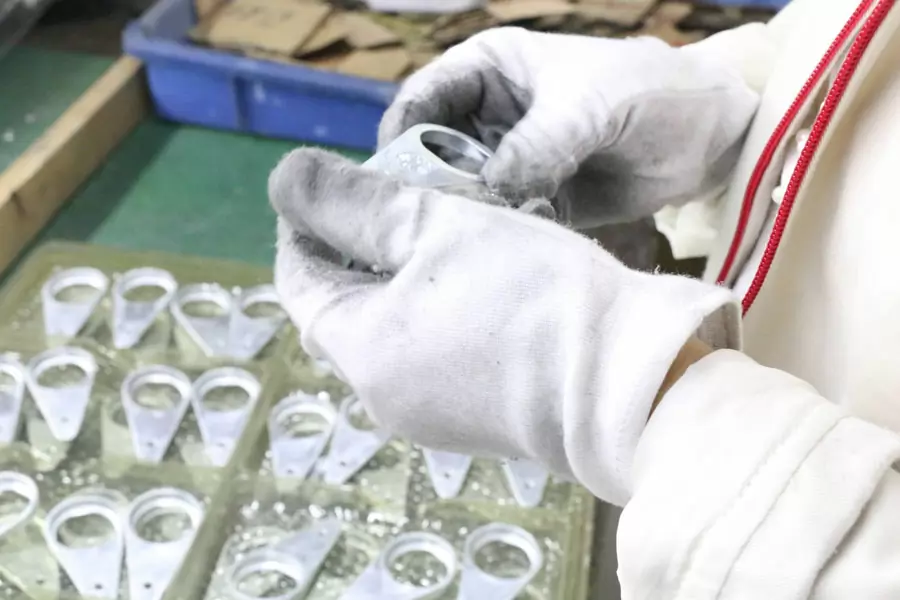
Certifications & Quality Machining
- ISO 9001:2015 certified
- Fully compliant with the exacting requirements of our customers
- Compliance in DFARS materials sourcing requirements
- Strict compliance with PPAP and Process
- FMEA for automotive customers
- Skilled in KanBan and CMM Inspection and inventory management systems
- ITAF 16949 certified
Anodizing Parts & Case Studies
At Be-Cu.com we offer effective products, processes, services and ideas to meet our customer’s needs.Our extensive range of custom anodizing capabilities includes forming oxide coatings up to 2.0 mils and permanent finishes in distinct colors. Whether a customer is an original equipment manufacturer (OEM) for the automotive, military, or medical industry, we can meet their anodizing needs.View our anodizing case studies:
-
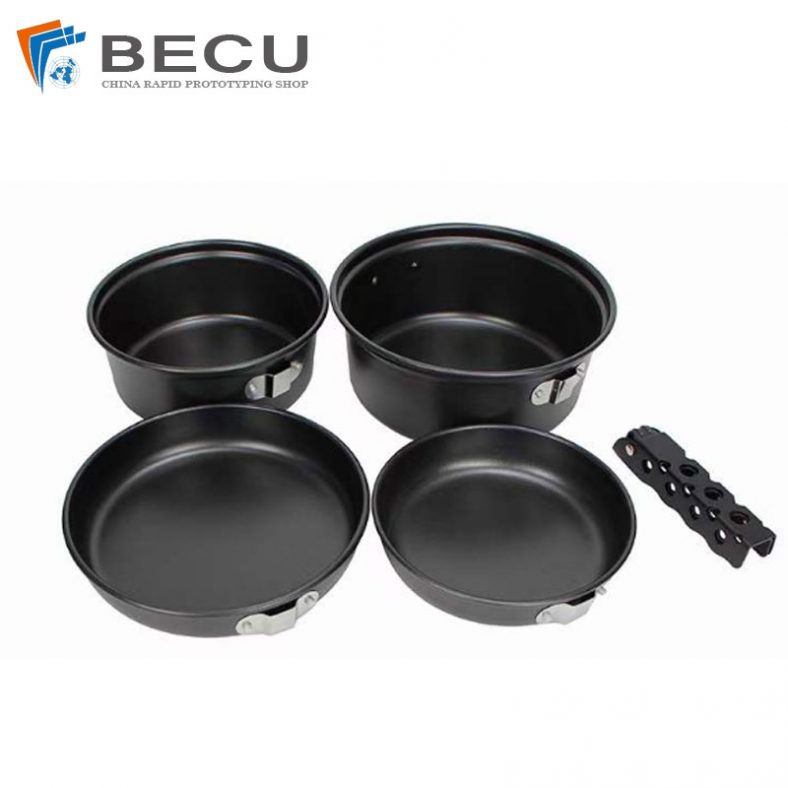
Prototype CNC Spinning Stainless Steel 316L Outdoor Camping Pot
-

Precision CNC Machining Unmanned Aerial Vehicle Motor Base
-

Precision CNC Turning 440C Blade
-

Precision Fabrication Green Energy EV Charging Station Cabinet
-

5 Axis CNC Machining Pump Impeller
-
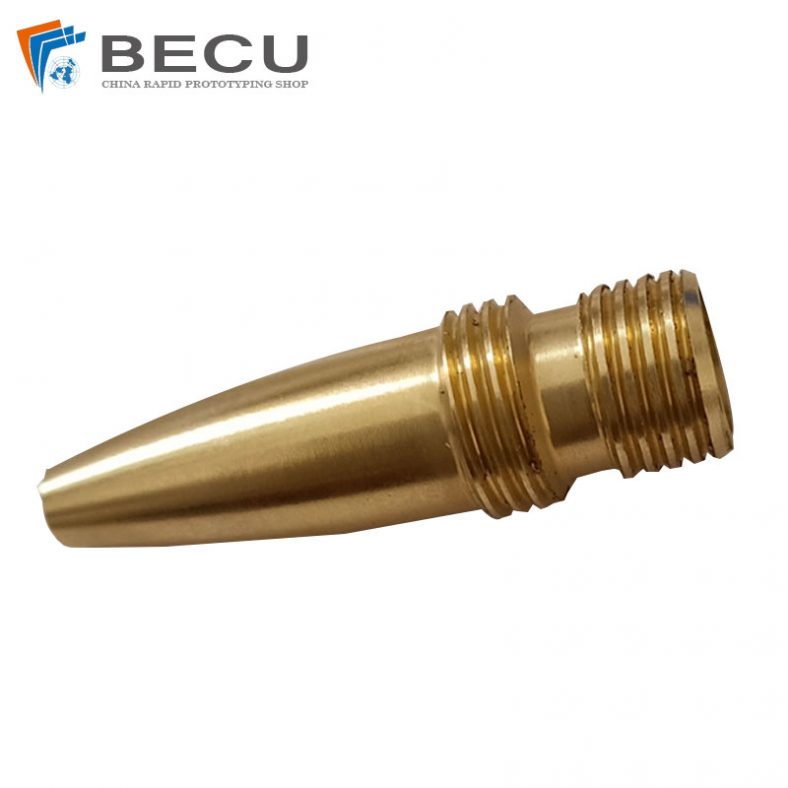
CNC Machining Double Threaded Pen Nib
-

CNC Machining Brass Solid Gourd Keychain
-

Precision Turning Solid Wenchang Pagoda Copper Ornament
-

TA1TA2 Alloy Sheet Metal Manufacturing Machinery Support Parts
-

Sheet Metal Fabrication Aluminum 5052 Medical Box For Fire Fighting
-
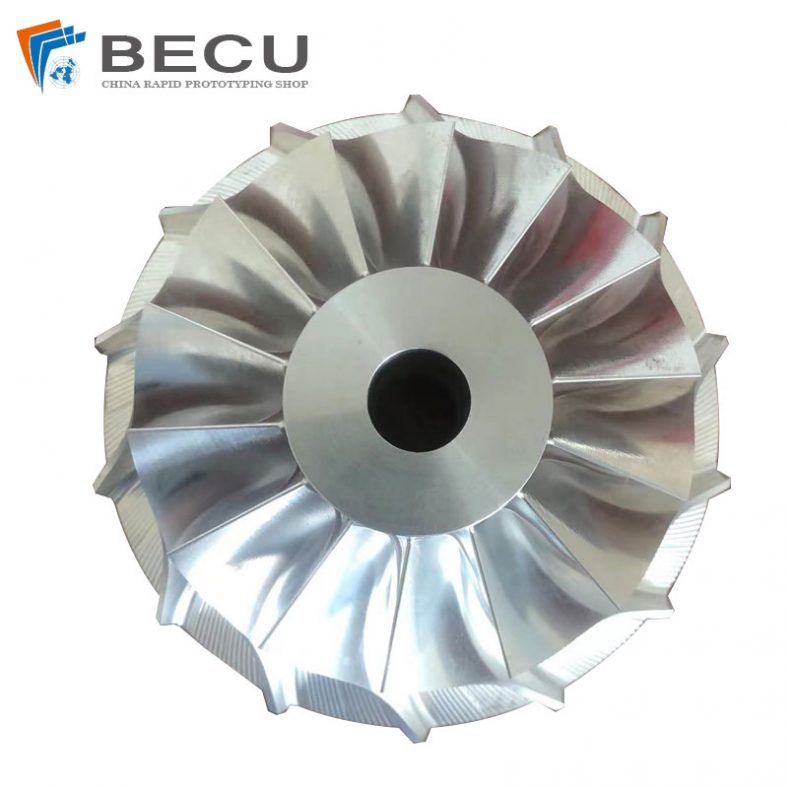
3-Way Centrifugal Compressor Closed Impeller By 5 Axis Machining
-

CNC Machining For Camera L Bracket
What Is Anodizing – The Define Of Anodizing Oxide
Anodizing is an electrochemical process that involves the formation of a controlled oxide layer on the surface of a metal, typically aluminum. During anodizing, the metal being treated acts as the anode in an electrolytic cell.
An electric current is applied, causing oxygen ions to be released at the anode, which react with the metal surface, forming an oxide layer.The oxide layer formed during anodizing provides several benefits, including increased corrosion resistance, improved durability, enhanced hardness, and the ability to add color through dyeing or other surface treatments.
Anodizing is commonly used in various industries, such as automotive, aerospace, construction, and electronics, to enhance the properties and aesthetics of metal components.In follow contents, we will explore the process of anodizing, its types, applications, advantages, and considerations.

The Anodizing Process – How Anodizing Works
Anodizing is an electrochemical process that creates a controlled oxide layer on the surface of a metal, typically aluminum. It involves immersing the metal in an electrolyte solution and applying an electric current to stimulate a series of reactions at the surface of the metal. The process can be summarized in the following steps:
1.Anode and Cathode
An anodizing setup consists of an anode and a cathode immersed in an electrolyte solution. The metal to be anodized is connected to the positive terminal (anode) of a power supply, while a cathode, usually made of lead or stainless steel, is connected to the negative terminal.
2.Pre-Treatment
Before anodizing, the metal surface undergoes pre-treatment to ensure it is clean and free from contaminants. This typically involves cleaning, degreasing, etching, and desmutting, as discussed in the previous section.
3.Anodizing Bath
The metal is immersed in an electrolyte solution, which acts as the electrolyte for the anodizing process. The most commonly used electrolyte for aluminum anodizing is sulfuric acid, although other solutions can be used for specific applications.
4.Electric Current Application
Once the metal is immersed in the electrolyte, a direct current (DC) is applied to the anodizing setup. This causes electrical reactions to occur at the surface of the metal.
5.Oxidation Reaction
At the anode (positive terminal), oxygen ions are generated from the electrolyte solution and react with the metal surface. In the case of aluminum, aluminum oxide (Al2O3) is formed. The oxide layer is built upon the existing metal surface.
6.Pore Formation
During anodizing, the oxide layer forms a porous structure. The pores are created as a result of the reaction between the metal and the oxygen ions. The size and distribution of the pores depend on various factors such as voltage, current density, and anodizing time.
7.Anodic Oxide Layer Growth
As the anodizing process continues, the oxide layer grows thicker. The thickness of the oxide layer can be controlled by adjusting parameters such as anodizing time and current density. The anodic oxide layer is integral to the metal surface, as it is formed through the oxidation of the metal itself.
8.Dyeing (Optional)
After the anodizing process, the porous oxide layer can be further enhanced by dyeing. This involves immersing the anodized metal in a colored dye solution. The porous structure of the oxide layer allows the dye to penetrate, resulting in a wide range of color options.
9.Sealing
The final step in the anodizing process is sealing the pores in the oxide layer to improve corrosion resistance and surface durability. Sealing is typically achieved through hot water sealing or chemical sealing processes. This step helps to close the pores and prevent the penetration of contaminants.
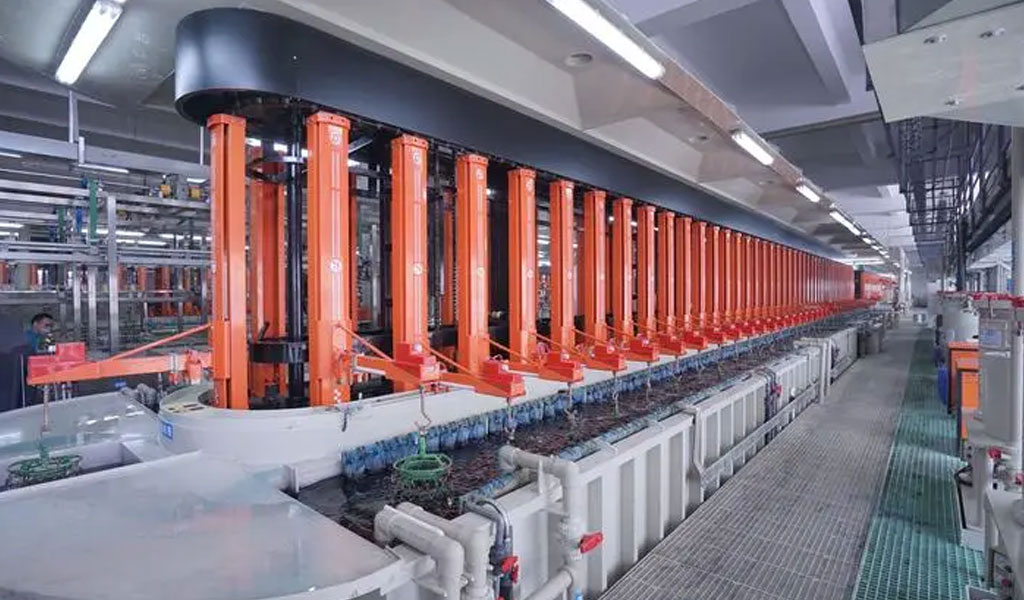
The resulting anodized metal has a durable, corrosion-resistant oxide layer that offers improved hardness, enhanced appearance, and various color options. Anodizing can be applied to other metals besides aluminum, although the process and outcomes may differ based on the specific metal being anodized.
The anodizing process is complex, and various factors such as voltage, current density, temperature, and electrolyte composition must be carefully controlled to achieve desired results. Proper process control and adherence to industry best practices are crucial to ensure consistent and high-quality anodized finishes.
Types of Anodizing: Exploring Different Techniques and Applications
Anodizing is a widely used surface treatment process that enhances the properties of metals, particularly aluminum, by creating a protective and decorative oxide layer on their surfaces. Depending on specific requirements and applications, different types of anodizing techniques are employed. Each type offers unique characteristics and benefits, making them suitable for various industries and applications. In this article, we will explore the different types of anodizing, including sulfuric acid anodizing (Type II), hardcoat anodizing (Type III), chromic acid anodizing (Type I), and other specialized variants.
I. Sulfuric Acid Anodizing (Type II)
Sulfuric acid anodizing, also known as Type II anodizing, is the most common and versatile type of anodizing. It involves immersing the metal, typically aluminum, in a sulfuric acid electrolyte solution. The process results in the formation of a relatively thick and porous anodic oxide layer. Some key characteristics and applications of sulfuric acid anodizing include:
- Oxide Layer Thickness: Sulfuric acid anodizing produces an oxide layer that is typically 1.8 to 25 micrometers thick. The thickness can be controlled by adjusting the anodizing time and current density.
- Porosity and Dyeing: The porous structure of the oxide layer allows for dyeing, offering a wide range of color options for decorative purposes. The oxide layer can absorb dyes, providing aesthetic customization options.
- Corrosion Resistance: Sulfuric acid anodizing enhances the corrosion resistance of the metal. The anodic oxide layer acts as a protective barrier, reducing the direct contact between the metal surface and corrosive elements.
- Decorative and Functional Applications: Sulfuric acid anodizing is commonly used in industries such as architecture, automotive, consumer goods, and electronics. It finds applications in decorative components, architectural structures, automotive trim parts, and electronic enclosures.
II. Hardcoat Anodizing (Type III)
Hardcoat anodizing, also known as Type III anodizing or hard anodizing, is a specialized anodizing technique that produces a thicker and denser oxide layer compared to sulfuric acid anodizing. This process results in enhanced hardness, wear resistance, and durability. Key features and applications of hardcoat anodizing include:
- Oxide Layer Thickness: Hardcoat anodizing typically produces an oxide layer that ranges from 25 to 150 micrometers thick. The thickness is significantly greater than that achieved through sulfuric acid anodizing.
- Increased Hardness and Wear Resistance: Hardcoat anodizing significantly enhances the hardness and wear resistance of the metal surface. The resulting oxide layer is much harder than the base metal, providing improved durability and protection against abrasion and wear.
- Engineering Applications: Hardcoat anodizing is commonly used in applications that require superior hardness and wear resistance. It finds applications in industries such as aerospace, defense, automotive, and manufacturing. Examples include pistons, cylinders, gears, tooling, and components subject to high mechanical stresses.
- Limited Dyeing Options: Unlike sulfuric acid anodizing, hardcoat anodizing does not provide extensive dyeing options due to the dense nature of the oxide layer. However, certain colors can be achieved through specialized processes like integral coloration or surface treatments.
III. Chromic Acid Anodizing (Type I)
Chromic acid anodizing, also known as Type I anodizing, is a specialized anodizing process that produces a thin, non-porous oxide layer on the metal surface. Key aspects and applications of chromic acid anodizing include:
- Thin Oxide Layer: Chromic acid anodizing creates an oxide layer that is generally less than 1 micrometer thick. It does not provide the same level of corrosion resistance or thickness as sulfuric acid anodizing or hardcoat anodizing.
- Priming and Adhesive Bonding: The thin, non-porous oxide layer formed during chromic acid anodizing is primarily used for priming and adhesive bonding applications. It promotes the adhesion of paints, adhesives, and other coatings to the metal surface.
- Improved Paint Adhesion: The oxide layer formed through chromic acid anodizing enhances the bonding of paint to the metal surface, resulting in improved paint adhesion and durability. This is beneficial in industries such as aerospace and automotive, where painted components require excellent adhesion and long-lasting finishes.
- Limited Decorative Options: Chromic acid anodizing does not offer extensive decorative options like dyeing. Its primary focus is on improving priming and adhesive properties rather than providing aesthetic customization.
IV. Other Specialized Variants
In addition to the commonly used sulfuric acid anodizing, hardcoat anodizing, and chromic acid anodizing, there are several specialized variants of anodizing that cater to specific industry requirements. Some of these variants include:
- Tartaric-Sulfuric Acid Anodizing: This type of anodizing is used primarily in the aerospace industry. It involves the addition of tartaric acid to the sulfuric acid electrolyte, resulting in improved fatigue resistance and adhesion for critical aerospace components.
- Boric-Sulfuric Acid Anodizing: Boric-sulfuric acid anodizing is another specialized anodizing process commonly used in the aerospace industry. The addition of boric acid to the sulfuric acid electrolyte improves the corrosion resistance and thermal stability of the anodic oxide layer.
- Organic Acid Anodizing: Organic acid anodizing is an environmentally friendly anodizing method that uses organic acids, such as citric acid or oxalic acid, as the electrolyte. It offers an alternative to sulfuric acid anodizing, particularly for certain applications where specific environmental or regulatory requirements must be met.
Advantages of Anodizing: Enhancing Metal Performance and Aesthetics
Anodizing is a surface treatment process that creates a protective and decorative oxide layer on metals, particularly aluminum. This electrochemical process offers numerous advantages that make it a popular choice in various industries. In this article, we will explore the advantages of anodizing, including enhanced corrosion resistance, improved durability, increased surface hardness, aesthetic options, and environmental benefits.
1.Corrosion Resistance
One of the key advantages of anodizing is the significant improvement in corrosion resistance. The anodic oxide layer formed during the process acts as a protective barrier, preventing direct contact between the metal surface and corrosive elements. This layer is highly resistant to oxidation and provides a durable shield against environmental factors such as moisture, chemicals, and UV radiation. Anodized surfaces exhibit superior corrosion resistance compared to untreated metal surfaces, ensuring long-lasting performance and protection against degradation.
2.Durability and Wear Resistance
Anodizing enhances the durability and wear resistance of metals, making them more robust and capable of withstanding harsh conditions. The anodic oxide layer formed through the process is harder and more resistant to abrasion than the base metal. It provides an additional layer of protection against scratches, impact, and general wear. Anodized surfaces maintain their integrity over time, preserving the appearance and performance of the metal components, even in high-stress environments.
3.Surface Hardness
Anodizing significantly improves the surface hardness of metals. The anodic oxide layer has a higher hardness level than the base metal, increasing the overall hardness of the treated surface. This hardness improvement is particularly beneficial in applications where metals are subjected to mechanical stresses, friction, or abrasive contact. Anodized surfaces exhibit enhanced resistance to surface damage, extending the lifespan of the metal and minimizing the need for repairs or replacements.
4.Aesthetic Appeal
Anodizing offers a wide range of aesthetic options, allowing for customization and the creation of visually appealing finishes. The porous structure of the anodic oxide layer allows for dyeing, resulting in a vast palette of vibrant colors. This enables designers and manufacturers to match specific design requirements, incorporate branding elements, or create visually striking metal components. Anodized surfaces maintain their color and appearance over time, resisting fading, chipping, and peeling.
5.Electrical Insulation
Anodized surfaces possess excellent electrical insulation properties, making them suitable for applications where electrical conductivity needs to be minimized or controlled. The anodic oxide layer acts as an insulator, preventing the flow of electric current across the surface. This characteristic is advantageous in industries such as electronics, electrical enclosures, and wiring systems, where electrical insulation is crucial for safety and performance.
6.Environmental Benefits
Anodizing is considered an environmentally friendly surface treatment process. It does not involve the use of heavy metals or toxic chemicals, making it a more sustainable option compared to alternative surface coating methods. The anodizing process uses water-based electrolyte solutions and does not generate harmful by-products. Furthermore, anodized surfaces are recyclable, contributing to overall waste reduction and environmental preservation.
7.Cost Efficiency
Anodizing offers cost benefits in various ways. Firstly, the enhanced durability and corrosion resistance of anodized metals reduce the need for frequent maintenance, repairs, or replacements. This leads to cost savings over the lifespan of the treated components. Secondly, anodizing is a relatively economical process compared to other surface treatment methods. The materials and equipment required for anodizing are widely available and relatively affordable, making it a cost-effective solution for many industries.
8.Versatility
Anodizing is a versatile process that can be applied to various metals, although it is primarily associated with aluminum. The technique can be adapted to suit different alloys and metal compositions, providing consistent results across a range of materials. This versatility allows anodizing to be utilized in a wide array of industries, including automotive, aerospace, construction, electronics, consumer goods, and more.
9.Regulatory Compliance
Anodizing meets various regulatory and industry standards, making it a preferred surface treatment choice for applications with specific requirements. The process does not involve the use of harmful substances or produce toxic by-products, ensuring compliance with environmental regulations and health standards. Anodized surfaces also fulfill specific industry specifications related to corrosion resistance, aesthetics, and electrical insulation.
Anodizing offers a multitude of advantages that enhance the performance, durability, aesthetics, and environmental sustainability of metals. The process provides superior corrosion resistance, improved durability, increased surface hardness, and a wide range of color options. Anodized surfaces exhibit excellent electrical insulation properties, making them suitable for diverse applications. Furthermore, anodizing is cost-effective, versatile, and complies with regulatory standards. Whether in architectural structures, automotive components, electronics, or consumer goods, anodizing continues to be a valuable surface treatment technique that optimizes the properties of metals and extends their lifespan.
Considerations for Anodizing: Factors to Keep in Mind for Successful Surface Treatment
Anodizing is a widely used surface treatment process that provides numerous benefits to metals, particularly aluminum. To achieve successful anodizing results, several considerations need to be taken into account. These considerations encompass various factors, such as material selection, surface preparation, design considerations, process parameters, and post-anodizing treatments. Understanding and addressing these considerations are crucial for obtaining optimal anodizing outcomes. In this article, we will explore the key considerations for anodizing and their importance in achieving high-quality, durable, and aesthetically pleasing results.
1.Material Selection
The choice of the base metal is an essential consideration in the anodizing process. While anodizing is commonly associated with aluminum, it can also be applied to other metals, including titanium and magnesium. Each metal has its own unique characteristics and requirements for successful anodizing. Factors to consider when selecting a material for anodizing include the metal’s composition, alloy type, surface condition, and intended application. It is important to consult material specifications and guidelines to ensure compatibility with the anodizing process.
2.Surface Preparation
Proper surface preparation is crucial for the success of the anodizing process. The metal surface must be thoroughly cleaned, degreased, and free from contaminants before anodizing. Surface preparation involves steps such as cleaning, degreasing, etching, and desmutting, as discussed earlier in the pre-treatment section. These steps ensure the removal of any dirt, oils, oxides, or impurities that can interfere with adhesion and uniformity of the anodic oxide layer. Adequate surface preparation promotes better bonding and enhances the overall quality of the anodized finish.
3.Design Considerations
Considerations in the design stage play a significant role in achieving desirable anodizing results. Design features and geometries can influence the uniformity of the anodic oxide layer and the overall aesthetics of the anodized part. Some design considerations include:
- Part Geometry: Complex part geometries can impact the uniformity of the anodic oxide layer due to variations in current density. It is important to consider the geometry of the part and its impact on the anodizing process. Certain design modifications, such as adding hooks or racks for better electrical contact, may be necessary to ensure consistent anodizing results.
- Recessed Areas and Sharp Corners: Recessed areas and sharp corners can experience lower current density during anodizing, resulting in thinner or uneven oxide layers. Design modifications, such as adding radius corners or chamfers, can help mitigate this issue and ensure uniform anodizing across the entire part.
- Masking and Selective Anodizing: If specific areas of the part need to remain unanodized or require a different color, masking techniques can be employed. Masking prevents the anodizing solution from reaching certain areas during the process. Careful consideration of masking materials and techniques is essential to achieve desired selective anodizing results.
4.Process Parameters
The control and optimization of process parameters are critical for achieving consistent and desirable anodizing outcomes. Process parameters that require careful attention include:
- Voltage and Current Density: The voltage and current density applied during anodizing play a significant role in controlling the thickness and quality of the anodic oxide layer. These parameters are determined based on the desired thickness, the type of anodizing (e.g., Type II or Type III), and the specific metal being anodized. Maintaining consistent voltage and current density within specified ranges is essential for achieving uniform and reliable anodizing results.
- Temperature: Anodizing is typically conducted at controlled temperatures to ensure proper oxide layer formation and to maintain process stability. The temperature can influence the rate of oxide formation and the pore size distribution within the anodic oxide layer. Consistent temperature control is necessary to achieve the desired anodizing characteristics and avoid potential issues such as burning or surface defects.
- Anodizing Time: The duration of the anodizing process determines the thickness of the anodic oxide layer. It is important to carefully monitor and control the anodizing time to achieve the desired thickness while maintaining the desired surface quality. Deviating from recommended anodizing times can result in variations in oxide layer thickness and potentially impact the overall performance of the anodized part.
5.Post-Anodizing Treatments
Post-anodizing treatments are often employed to further enhance the performance, appearance, and durability of the anodized part. Some common post-anodizing treatments include:
- Sealing: Sealing the anodic oxide layer is typically performed to improve corrosion resistance, reduce porosity, and enhance the surface finish. Sealing can be achieved through hot water sealing or chemical sealing processes. The sealing method and parameters are determined based on the specific requirements of the application.
- Coloring and Dyeing: If color is desired, dyeing can be performed after anodizing. Dyes are absorbed into the porous oxide layer, resulting in a wide range of color options. The dyeing process should be carried out carefully, considering factors such as dye concentration, immersion time, and rinsing procedures, to achieve the desired color and consistency.
- Mechanical Finishing: Mechanical finishing techniques, such as polishing, brushing, or sandblasting, can be employed to modify the surface texture and appearance of the anodized part. These treatments can enhance the aesthetics, improve light reflectivity, and create specific surface finishes according to the design requirements.
6.Quality Control and Testing
Implementing robust quality control measures and testing procedures is essential to ensure consistent and reliable anodizing results. Quality control measures may include visual inspection, thickness measurement of the oxide layer, adhesion testing, corrosion resistance testing, and color consistency assessment. Regular monitoring and evaluation of the anodizing process help identify potential issues and ensure adherence to specified requirements.
7.Environmental and Safety Considerations
Environmental and safety considerations are important in the anodizing process. Anodizing operations should comply with relevant environmental regulations and safety standards. This includes proper disposal of waste materials, treatment of effluents, and the use of environmentally friendly anodizing solutions. Adequate safety measures should also be in place to protect workers from potential hazards associated with chemicals, electricity, and other aspects of the anodizing process.
Considerations for anodizing are essential for achieving successful surface treatment outcomes. Material selection, surface preparation, design considerations, process parameters, post-anodizing treatments, quality control, and environmental factors all contribute to the overall success of the anodizing process. By carefully addressing these considerations, manufacturers can ensure high-quality, durable, and aesthetically pleasing anodized finishes that meet specific requirements and enhance the performance of metal components in various industries.
Applications of Anodizing: Enhancing Performance and Aesthetics in Various Industries
Anodizing is a versatile surface treatment process that offers a wide range of benefits to metals, particularly aluminum. The enhanced properties provided by anodizing make it a popular choice in numerous industries. This article explores the diverse applications of anodizing, highlighting how it enhances the performance, durability, and aesthetics of metal components across various sectors.
1.Architecture and Construction
Anodizing finds extensive use in the architecture and construction industry due to its durability, corrosion resistance, and aesthetic appeal. The applications include:
- Building Facades: Anodized aluminum is often used for building facades due to its weather resistance, low maintenance requirements, and design versatility. Anodized finishes can be customized to match specific architectural designs, offering a durable and visually appealing exterior.
- Window Frames and Doors: Anodized aluminum window frames and doors are preferred for their corrosion resistance and color options. The anodized finish ensures long-lasting performance and maintains the aesthetics of the building’s exterior.
- Structural Components: Anodizing is utilized for structural components such as columns, beams, and cladding. It enhances their durability, provides resistance to environmental factors, and contributes to the overall longevity of the structure.
- Interior Design Elements: Anodized finishes are applied to interior design elements, including handrails, decorative panels, and fixtures. The wide range of color options and the durability of anodized surfaces make them ideal for enhancing the aesthetics and longevity of interior spaces.
2.Automotive Industry
Anodizing plays a vital role in the automotive industry, offering functional and aesthetic benefits to various vehicle components. The applications include:
- Exterior Trim and Accents: Anodized aluminum is commonly used for exterior trim and accents, such as grilles, moldings, and emblems. The anodized finish provides excellent corrosion resistance, withstands harsh weather conditions, and enhances the visual appeal of the vehicle.
- Wheels and Wheel Accessories: Anodizing is applied to aluminum wheels to improve their durability, resistance to corrosion, and enhance their appearance. Anodized wheel accessories, such as lug nuts and valve stems, provide a cohesive and visually appealing look.
- Interior Components: Anodized finishes are utilized in interior components, including dashboard trim, door handles, and control panels. Anodizing enhances the durability and aesthetic appeal of these components, ensuring they withstand daily use and maintain their appearance over time.
- Engine and Transmission Components: Anodizing is used in engine and transmission components to improve their wear resistance and corrosion protection. It contributes to the overall performance and longevity of critical automotive parts.
3.Aerospace and Defense
The aerospace and defense industries benefit from anodizing due to its ability to enhance performance, withstand harsh environments, and meet stringent specifications. The applications include:
- Aircraft Exterior Parts: Anodizing is applied to various exterior parts of aircraft, such as wings, fuselage, and engine components. It improves corrosion resistance, provides protection against atmospheric conditions, and ensures durability under extreme temperatures and exposure to chemicals.
- Interior Cabin Components: Anodized finishes are used in interior cabin components, including seat frames, luggage bins, and trim panels. The anodized surfaces provide durability, wear resistance, and aesthetic customization options.
- Military Equipment: Anodizing is widely used in military equipment and weaponry. It enhances the corrosion resistance and durability of firearms, ammunition casings, and other critical components used in defense applications.
4.Electronics and Electrical Industry
Anodizing plays a significant role in the electronics and electrical industry, providing protection, insulation, and customization options. The applications include:
- Electrical Enclosures: Anodizing is commonly applied to electrical enclosures, such as control panels, switchgear cabinets, and power distribution units. The anodized finish enhances the corrosion resistance, electrical insulation, and aesthetics of these enclosures.
- Heat Sinks: Anodized aluminum heat sinks are widely used in electronic devices to dissipate heat efficiently. The anodized finish improves thermal performance, provides protection against corrosion, and offers a visually appealing surface.
- Printed Circuit Boards (PCBs): Anodizing is utilized in the fabrication of PCBs to protect exposed copper traces from oxidation and corrosion. Anodized coatings ensure reliable performance and longevity of electronic circuits.
5.Consumer Goods and Household Items
Anodizing is applied to various consumer goods and household items to enhance their appearance, durability, and corrosion resistance. The applications include:
- Furniture and Decorative Items: Anodizing is employed in the production of furniture and decorative items, such as lighting fixtures, picture frames, and kitchenware. The anodized finishes provide aesthetic customization, durability, and resistance to wear and tear.
- Sporting Goods and Outdoor Equipment: Anodizing is used in the manufacturing of sporting goods and outdoor equipment, including bicycles, camping gear, and fishing reels. The anodized finishes offer corrosion resistance, durability, and the ability to incorporate vibrant colors for branding and customization.
- Personal Accessories: Anodized finishes are applied to personal accessories such as watches, jewelry, and mobile phone cases. The anodized surfaces provide scratch resistance, corrosion protection, and a wide range of color options to match individual styles and preferences.
Anodizing finds diverse applications in numerous industries, offering enhanced performance, durability, and aesthetic appeal to metal components. From architecture and automotive to aerospace, electronics, and consumer goods, anodizing provides corrosion resistance, improved wear characteristics, electrical insulation, and customization options. The broad range of applications underscores the versatility and benefits of anodizing as a surface treatment process.
Choose the Best Surface Treatment Process
After browsing a list of Surface Treatment services, select a process based on essential considerations, like production time, cost-effectiveness, part tolerance, durability and applications. High-tolerance CNC milling, turning parts are not recommended to apply secondary metal surface finish, because the treatment may change the sizes of the finished part through removing or adding a small amount of materials.
Other requirements or custom designs, welcome to contact us for a free quote fast or email!
